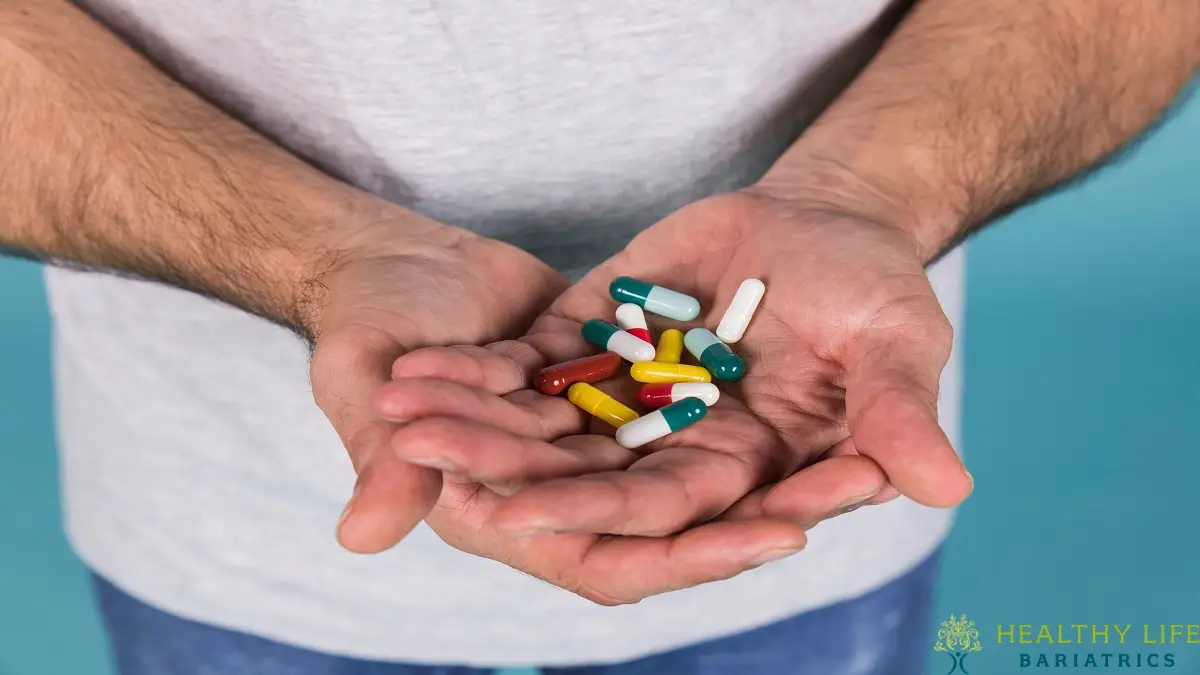Gastric sleeve surgery, while often a life-changing procedure for weight loss, can bring notable discomfort during the initial recovery phase. Many patients report experiences of soreness and pain stemming from abdominal incisions, which can vary in intensity from mild to severe. This postoperative pain is a common aspect of the healing process, as the body adjusts to the new surgical landscape.
However, advancements in surgical techniques have significantly transformed the experience of gastric sleeve surgery. Minimally invasive approaches, such as laparoscopic procedures, have reduced the size of incisions, which in turn leads to less trauma to the body and, subsequently, less pain. Patients now benefit from improved pain management strategies that enhance comfort and facilitate a quicker recovery.
These innovations not only minimize postoperative pain but also shorten overall recovery times, allowing patients to resume their daily activities sooner than before. In this evolving landscape of weight-loss surgery, understanding the balance between expected discomfort and modern surgical advancements becomes essential for prospective patients.

After gastric sleeve surgery, the pain intensity experienced by most patients is generally mild to moderate. Patients often describe the discomfort as akin to the soreness felt after doing many abdominal crunches, primarily localized around the incision sites. Compared to other surgical procedures, the pain after gastric sleeve surgery is often more tolerable, with most individuals needing painkillers for only the first 24 to 36 hours. After this initial period, pain relief typically switches to "as needed" medications.
Additionally, patients may experience sensations of pressure in the abdomen due to the stomach's reduced capacity. This pressure can be a normal part of the postoperative recovery process as the body adjusts to its new anatomy. While some discomfort is expected, it is manageable and greatly overshadowed by the potential benefits of the surgery in achieving weight loss and improved health. Overall, most patients find the pain to be a minor aspect of their gastric sleeve journey.
Gastric sleeve surgery, a popular weight-loss procedure, involves significant modification to the stomach, which inevitably raises questions about the level of pain experienced during recovery. Understanding the factors that influence post-operative pain can help patients prepare psychologically and physically for their journey. Some of these elements include individual pain tolerance, the surgical technique used, the effectiveness of pain management strategies, and the patient’s overall health and medical history.
Additionally, the type and duration of the surgery, as well as post-operative complications, can greatly impact the pain experience. By exploring these factors, prospective patients can gain a clearer insight into what to expect, enabling them to make more informed decisions about their surgical options and recovery plan.
Bariatric surgeons utilize various techniques for gastric sleeve surgery, notably single port laparoscopic and multiple incision laparoscopic methods. In single port laparoscopic surgery, a single incision made at the navel allows the surgeon to insert instruments and perform the procedure, minimizing visible scarring. Conversely, multiple incision laparoscopic techniques involve several small incisions on the abdomen, providing the surgeon with more flexibility in instrument positioning.
Both methods offer significant benefits compared to traditional open surgery, such as reduced incision size, decreased postoperative pain, and quicker recovery times. Patients often experience shorter hospital stays and faster return to normal activities. However, preferences for specific techniques can vary among surgeons, influenced by their experience and patient needs.
Gastric sleeve surgery continues to gain popularity, surpassing procedures like gastric banding and gastric bypass due to its effectiveness in weight loss and improved metabolic outcomes. Patients favor gastric sleeve for its relatively straightforward execution and the absence of foreign devices, solidifying its position as a preferred option in bariatric surgery.
Drug tolerance is a physiological process that occurs when a patient becomes less responsive to a medication after prolonged use. This is particularly relevant for individuals who have been using strong painkillers, such as narcotics, or sedatives like benzodiazepines over an extended period. As tolerance develops, patients may find that standard doses are no longer effective for pain management, necessitating increased doses to achieve the desired therapeutic effects.
In the postoperative setting, this phenomenon is crucial as it impacts pain control strategies. Patients with drug tolerance may require significantly higher doses of medication to manage pain effectively after surgery. Thus, it is essential for these patients to disclose their complete medication history, including any use of narcotics or benzodiazepines, to their surgeon and healthcare provider.
This information enables the surgical team to tailor pain management protocols and ensure optimal care while minimizing the risk of undertreating postoperative pain. Understanding drug tolerance is vital for improving patient outcomes and enhancing the overall surgical experience.

Minimizing excessive manipulation during gastric sleeve surgery is crucial for ensuring patient safety and promoting a smoother recovery. Performing the procedure on a patient who has achieved significant preoperative weight loss simplifies the surgical process by reducing the need to manipulate internal organs. This decrease in manipulation not only shortens the surgery time but also minimizes trauma to surrounding tissues, which can lead to fewer complications.
Increased manipulation of internal organs during surgery can elevate the risk of issues such as bleeding, infection, or injury to surrounding structures, prolonging recovery time and overall patient discomfort. Opting for surgeons who are experienced in laparoscopic techniques further limits unnecessary manipulation compared to traditional open surgery. Laparoscopic procedures use smaller incisions, facilitating a less invasive approach that reduces disruption to the body's internal processes and enhances the healing experience.
Ultimately, prioritizing strategies that reduce excessive manipulation, such as preoperative weight loss and choosing skilled laparoscopic surgeons, can lead to better outcomes and a quicker recovery for patients undergoing gastric sleeve surgery.
The experience of a surgeon plays a crucial role in the success of gastric sleeve surgery. A surgeon lacking proficiency may resort to conventional techniques instead of the preferred laparoscopic method, which is less invasive and typically results in quicker recovery times. This shift can significantly impact the overall outcome for the patient.
Inexperienced surgeons often face increased surgical risks, which can lead to complications such as infection, bleeding, or inadequate weight loss. These risks not only prolong recovery but also may necessitate additional surgeries to address issues that arise.
When confronted with less experienced surgeons, patients should actively seek options. Researching potential surgeons, requesting credentials, and reviewing outcomes can greatly influence the surgical experience. Choosing a highly skilled surgeon with a solid track record in gastric sleeve procedures maximizes the likelihood of minimizing surgical risks and ensuring effective complication prevention. Prioritizing surgeon experience is vital for achieving the optimal benefits of gastric sleeve surgery, delivering improved health outcomes and patient satisfaction.
After undergoing surgery, many patients experience pain as a natural part of the healing process. However, understanding what to expect and how to manage post-operative pain can alleviate anxiety and promote recovery. This section addresses frequently asked questions from our patients regarding pain after surgery, providing insights into the typical duration and intensity of pain, the effectiveness of various pain management strategies, and when to seek additional medical assistance. By offering clear and concise answers to these common concerns, we aim to empower patients with the knowledge they need to navigate their recovery journey more confidently and comfortably.
After gastric sleeve surgery, many patients mistakenly believe that their pain is due to carbon dioxide gas used during laparoscopic procedures. While gas is indeed introduced into the abdominal cavity for visualization, it is primarily removed at the end of the surgery. If any gas remains, it can cause shoulder pain, not pain in the stomach itself. This discomfort results from the gas irritating the diaphragm, which shares nerve pathways with the shoulder.
However, it’s essential to understand that postoperative pain is not solely caused by gas. A significant portion of the pain originates from the abdominal incisions and the healing process of the muscle fibers in the abdomen. As these tissues heal, they can cause considerable discomfort. Thus, while gas pain may be a contributing factor, the overall postoperative pain experienced after gastric sleeve surgery is largely due to surgical trauma and the body’s natural healing process. Understanding the sources of pain can help patients manage their recovery more effectively.

Some patients may confuse pain caused by air in the stomach with hunger pangs, which are the body's signals for true appetite sensation. This confusion arises because both sensations can manifest as discomfort or gnawing feelings in the abdomen. However, the critical distinction lies in the fact that discomfort from trapped air does not reflect an actual need for nourishment.
Misinterpreting these sensations can lead to ineffective dietary management, as individuals might respond to the false perception of hunger by eating when their body does not require food. This can result in overeating and digestive issues rather than addressing the true cause of the discomfort.
Awareness of this phenomenon is crucial for effective patient education and symptom recognition. By informing patients about the differences between pain perception due to gastrointestinal issues and true hunger, they can make more informed decisions regarding their dietary habits and overall health. Understanding these distinctions can improve digestive health and enhance the effectiveness of dietary management strategies.
After being discharged from the hospital following gastric sleeve surgery, patients enter a critical post-discharge recovery phase. Common symptoms during this time include fatigue, nausea, and pain, which can vary in intensity. It is essential to adhere to postoperative dietary guidelines to promote healing and avoid complications.
Patients will initially consume only clear liquids, gradually transitioning to pureed foods over several weeks. This careful progression helps the stomach adapt to a smaller capacity and reduces stress on the digestive system. Adhering strictly to these dietary guidelines is vital for successful recovery.
Additionally, lifelong vitamin and supplement intake is crucial, as the surgery can affect nutrient absorption. Regular medical checkups during the early recovery phase are necessary to monitor health and manage any potential complications.
By closely following dietary guidelines, managing symptoms, and attending medical checkups, patients can enhance their recovery after gastric sleeve surgery and support long-term health.
In conclusion, gastric sleeve surgery is associated with minimal pain levels shortly after the procedure, often favorably compared to surgeries like laparoscopic appendectomy and cesarean section. Most patients report manageable discomfort, primarily stemming from abdominal incisions and the body adjusting to a smaller stomach capacity.
Innovative techniques in the surgical approach significantly enhance recovery by minimizing incisions. These advances lead to reduced pain and quicker mobility, enabling patients to resume daily activities sooner. The use of laparoscopic methods allows for smaller cuts, thereby decreasing trauma to the abdominal wall, which contributes to an overall more pleasant recovery experience.
While some discomfort is expected, particularly in the initial days post-surgery, the majority of patients find the pain manageable and fleeting. Overall, gastric sleeve surgery stands out for its relatively low pain levels, making it a preferred option for those seeking weight loss solutions with less postoperative discomfort.
we encourage you to make a consultation with Dr. Moein at Healthy bariatric life in Los Angeles, CA to determined whether you are a good candidate.